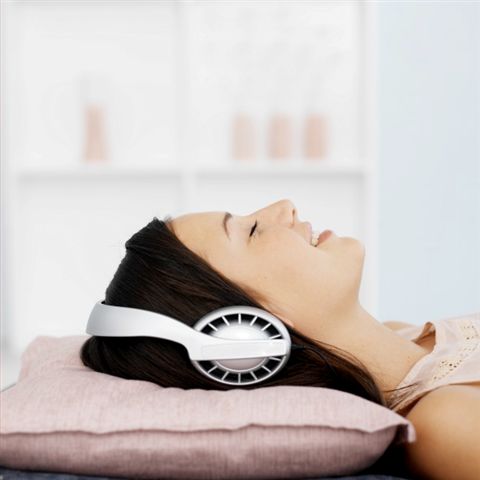 Physical Ed
Physical Ed  1 Comment
1 Comment Still Shocking
CONTENT WARNING: physical abuse and torture
On Thursday, April 24, 2014, the FDA held a hearing to decide whether it’s okay to shock autistic people into submission. They held another hearing in 2016. It’s 2018 now, and the shocks haven’t stopped.
The Judge Rotenberg Educational Center In Canton, MA administers strong electrical shocks (60 volts and 15 milliamps) as part of its “aversive therapy” to prevent students from self-harm and aggression, though in reality, records show that they’re applied for as little as blowing spit bubbles or standing up. Children as young as nine years old receive this torture, which Dr. Ivar Lovaas saw as a logical extension of his ABA therapy, which many autistic people already consider a form of torture.
The Center has been subject to a number of scandals, including the deaths of several patients in the 1980s and ‘90s. In June 2012, videotape was released to the media, showing JRC student Andre McCollins being restrained for over seven hours. In that time, he was shocked 31 times for infractions such as “tensing his body and yelling.” JRC spokespeople maintained that it was part of his court-approved treatment plan, but it left him hospitalized in a catatonic state for five and a half weeks. The UN later ruled that the incident fit their definition of torture.
The JRC claims that aversive therapy produces marked behavior modification. They maintain that, “Without the treatment program at JRC, these children and adults would be condemned to lives of pain by self-inflicted mutilation, psychotropic drugs, isolation, restraint and institutionalization—or even death.”
Ultimately, the FDA advisory panel recommended that all of these devices be banned. Some suggested that there should be a six-month period for “tapering off,” as if electric shocks are a medicine from which you must withdraw slowly or experience severe side effects. Even this qualified decision was a narrow one: only 60 percent of the panel approved the ban recommendation.
One of the most disturbing parts of the FDA panel in 2014 was the amount of time spent addressing the question of whether autistic people feel pain the same way as “normal” people. After all, if they can with stand repeated 60-volt shocks—sufficient to inflict second-degree burns to their skin—they can hardly have a “human tolerance.”
At the heart of this whole hearing, and indeed the story of the Judge Rotenberg Education Center, there lies a fundamental question: are autistics really human like the “rest of us”? Othering is a necessary component to any system of training or discipline that requires cruel and inhumane punishment. It’s okay to beat that slave, rape that woman, lock away that crazy person, or exterminate that ethnicity—they’re not the same as us. They don’t even have the same feelings that we have. They’re no better than animals; if we could only train them to be like us, we wouldn’t have to apply such tortures.
And the problem with the dominant rhetoric surrounding autism right now—promoted relentlessly by groups like Autism $peaks—is that the autistic is silent, incapable of communicating from their self-imposed mental prison. An autistic child is a changeling, a dummy replica of the stolen, beloved, “real” child. This heartless thief leaves grieving families in suspended animation, and it must be combatted like anything that would abduct our children.
It stands to reason that anything that might recover a lost child is worth a try. But there’s a fundamental disconnect between the “lost one” and the object on which “therapies” as bizarre and inhumane as bleach enemas, severe emetics, and electrical shocks are applied. The object being treated must stay “other,” or those desperate parents must face the reality that they are physically and mentally torturing their own child.
Except that all of this is a lie. There is no other son, no lost daughter—the children in front of us are real and human. They can communicate, and they can most certainly feel. They will not fare that much better in the world if parents or therapists abuse them until they stop flapping their hands or raising their voices. In fact, they’ll do just as poorly as any physically or mentally abused child. Because that’s what they are when treated with restraints, sensory deprivation, and electrical shocks—victims of torture.
It’s offensive that it took a special hearing in 2014 to decide whether administering shocks to human beings was a legitimate form of “education.” It’s infuriating that the FDA felt the need for more hearings in 2016. And it’s utterly disgusting that in 2018, the patients of the Judge Rotenberg Center are still waiting for the torture to end.
What you can do:
Visit the extensive living archive about the Judge Rotenberg Center, compiled and maintained by Lydia X. Z. Brown.
Take action to urge the FDA to finally enforce the ban they recommended in 2014.
Spread the word using the hashtag #StopTheShock.






 This year, I’m trying to do something about this. I’ve submitted proposals to both Origins and Gen Con–the two conventions I’m planning to attend this year–to establish a Sensory Break Room for people who are physically or mentally challenged by the rigorous environment of the con.
This year, I’m trying to do something about this. I’ve submitted proposals to both Origins and Gen Con–the two conventions I’m planning to attend this year–to establish a Sensory Break Room for people who are physically or mentally challenged by the rigorous environment of the con. The room will be screened off, instead of requiring users to open and close a clanky door. The lights will be kept quite low, probably too low to read properly, but there may be some soft, shifting colored lights to focus on. No music or other noise will be permitted, but a small fan or ionizer will run to provide white noise as an auditory buffer. Nobody will bug anyone else, but neither is it a nap room. If someone falls asleep, the monitor will wake them up after five or ten minutes, and each user will be responsible if they accidentally sleep through an event they’re supposed to attend. I’m hoping that the folks most likely to use it will be generous in bringing some adaptive tools to share–weighted blankets, exercise balls, fidgets, and other comforting objects.
The room will be screened off, instead of requiring users to open and close a clanky door. The lights will be kept quite low, probably too low to read properly, but there may be some soft, shifting colored lights to focus on. No music or other noise will be permitted, but a small fan or ionizer will run to provide white noise as an auditory buffer. Nobody will bug anyone else, but neither is it a nap room. If someone falls asleep, the monitor will wake them up after five or ten minutes, and each user will be responsible if they accidentally sleep through an event they’re supposed to attend. I’m hoping that the folks most likely to use it will be generous in bringing some adaptive tools to share–weighted blankets, exercise balls, fidgets, and other comforting objects. 
 The time for ritual is at hand. I stand in the place of my power, tools of the magic I will work laid out before me– silver, wood, and steel. Fire and water are at my command, earth and air held back by my will. In this time, I will draw on the forces of creation, shaping elements. Here, I am an alchemist, a hand of the goddess herself.
The time for ritual is at hand. I stand in the place of my power, tools of the magic I will work laid out before me– silver, wood, and steel. Fire and water are at my command, earth and air held back by my will. In this time, I will draw on the forces of creation, shaping elements. Here, I am an alchemist, a hand of the goddess herself. While I am not so bold as to commit to such a statement myself, the power of the kitchen, and what it summons and creates, is not to be denied. Though I began down the path of Wicca in solitude, I learned the magic of cooking as all good magics are best learned : at the elbow of a wise and laughing grandmother. The rules were simple. Wash your hands. Clean as you go. Read the whole recipe before you start. Measure with care. And, most importantly, share the joy as often as possible–that’s why there are always enough beaters and spatulas and bowls for everyone. If you abide by that last rule, no spills or scorches can spell failure. Just vacuum up the oatmeal, wash the egg out of your hair, and laugh about the fun you had.
While I am not so bold as to commit to such a statement myself, the power of the kitchen, and what it summons and creates, is not to be denied. Though I began down the path of Wicca in solitude, I learned the magic of cooking as all good magics are best learned : at the elbow of a wise and laughing grandmother. The rules were simple. Wash your hands. Clean as you go. Read the whole recipe before you start. Measure with care. And, most importantly, share the joy as often as possible–that’s why there are always enough beaters and spatulas and bowls for everyone. If you abide by that last rule, no spills or scorches can spell failure. Just vacuum up the oatmeal, wash the egg out of your hair, and laugh about the fun you had. But I have to be honest about something, and it’ll probably blow the lid right off any sort of “kitchen witch mystique” I may have managed to build. I am no gourmet. I’ve never taken a cooking class. Those brownies which my friends and co-workers steadfastly maintain are the best they’ve ever tasted? Betty Crocker, Fudge Supreme, $2.49 with coupon. That chili whose aroma wafts out like tickling fingers when I open the door on a cold winter night, drawing my husband in all the quicker? Packet of spices, canned beans and tomatoes. Simmer on low for 20 minutes. That’s it. And I’ve never made a secret of it.
But I have to be honest about something, and it’ll probably blow the lid right off any sort of “kitchen witch mystique” I may have managed to build. I am no gourmet. I’ve never taken a cooking class. Those brownies which my friends and co-workers steadfastly maintain are the best they’ve ever tasted? Betty Crocker, Fudge Supreme, $2.49 with coupon. That chili whose aroma wafts out like tickling fingers when I open the door on a cold winter night, drawing my husband in all the quicker? Packet of spices, canned beans and tomatoes. Simmer on low for 20 minutes. That’s it. And I’ve never made a secret of it. So I may not always remember all the poetic invocations when I call the Watchtowers in a Circle, but I remember the favourite food for every loved one in my life, and most of the recipes. And so I might be dreadful at keeping a proper herbal grimoire stocked–my spice racks are the envy of all who survey. I consider myself well on the road to the Lord and Lady’s wisdom, because I know the seat and value of a generous, abundant power within myself, one of the greatest signposts on everyone’s spiritual journey. And when I get there, I’ll be sure to have a dish to pass.
So I may not always remember all the poetic invocations when I call the Watchtowers in a Circle, but I remember the favourite food for every loved one in my life, and most of the recipes. And so I might be dreadful at keeping a proper herbal grimoire stocked–my spice racks are the envy of all who survey. I consider myself well on the road to the Lord and Lady’s wisdom, because I know the seat and value of a generous, abundant power within myself, one of the greatest signposts on everyone’s spiritual journey. And when I get there, I’ll be sure to have a dish to pass. Almost every good and wonderful thing about the winter holidays is a sensory delight. The smells of cold snow and freshly cut pine and butter-rich cookies tingle in our noses. Pipe organs and French horns and jingly bells and heavenly choirs and crinkly paper delight our ears with musical sounds rarely used in the rest of the year. Velvety and satiny fabrics combine with delightfully scratchy sweaters and fuzzy hats in our special party clothes. We write ourselves dietary hall passes for the dozens of special, luscious holiday foods. And the lights…oh, the lights! Who doesn’t gasp and crane at the sight of an elaborately decorated building or brilliantly lit tree?
Almost every good and wonderful thing about the winter holidays is a sensory delight. The smells of cold snow and freshly cut pine and butter-rich cookies tingle in our noses. Pipe organs and French horns and jingly bells and heavenly choirs and crinkly paper delight our ears with musical sounds rarely used in the rest of the year. Velvety and satiny fabrics combine with delightfully scratchy sweaters and fuzzy hats in our special party clothes. We write ourselves dietary hall passes for the dozens of special, luscious holiday foods. And the lights…oh, the lights! Who doesn’t gasp and crane at the sight of an elaborately decorated building or brilliantly lit tree?


